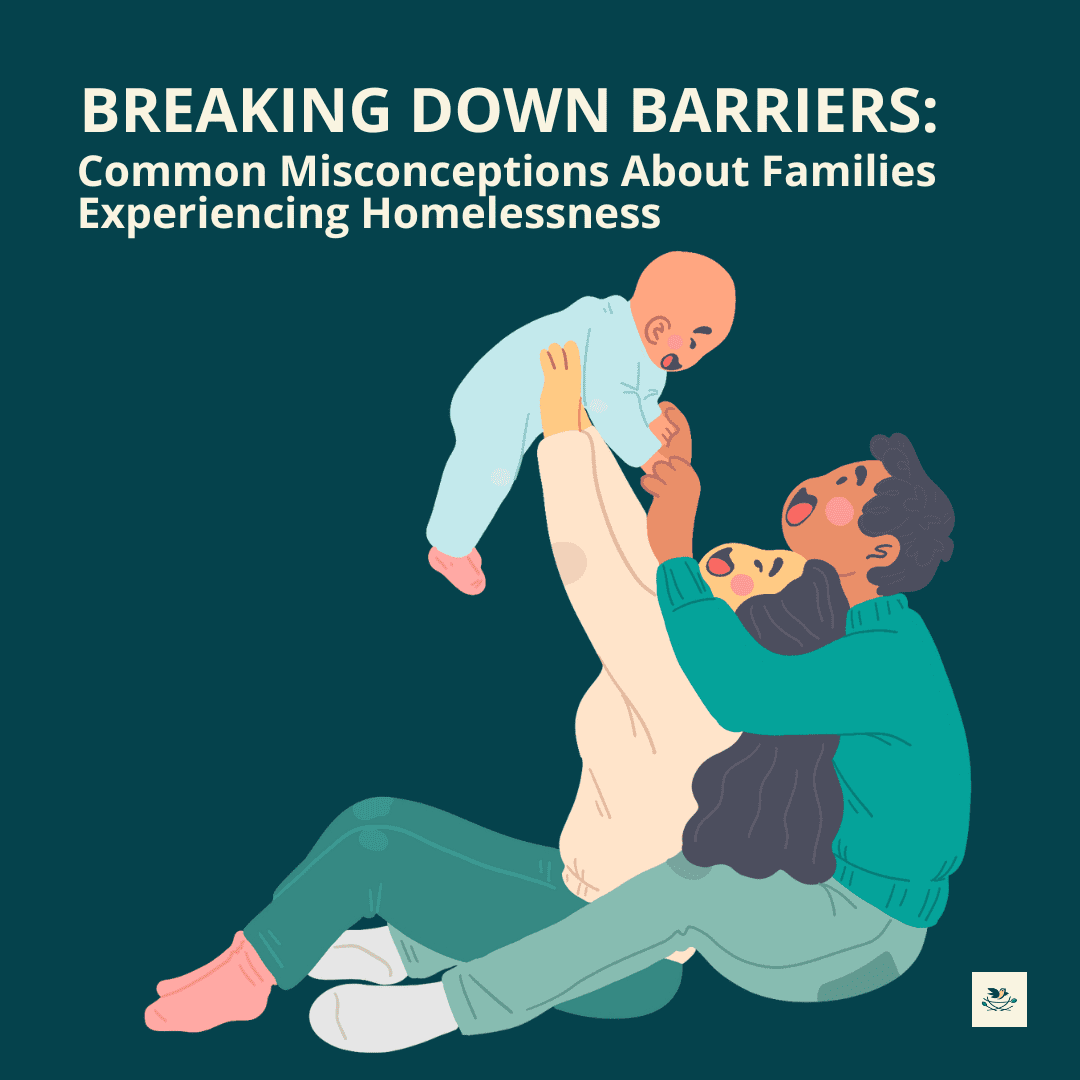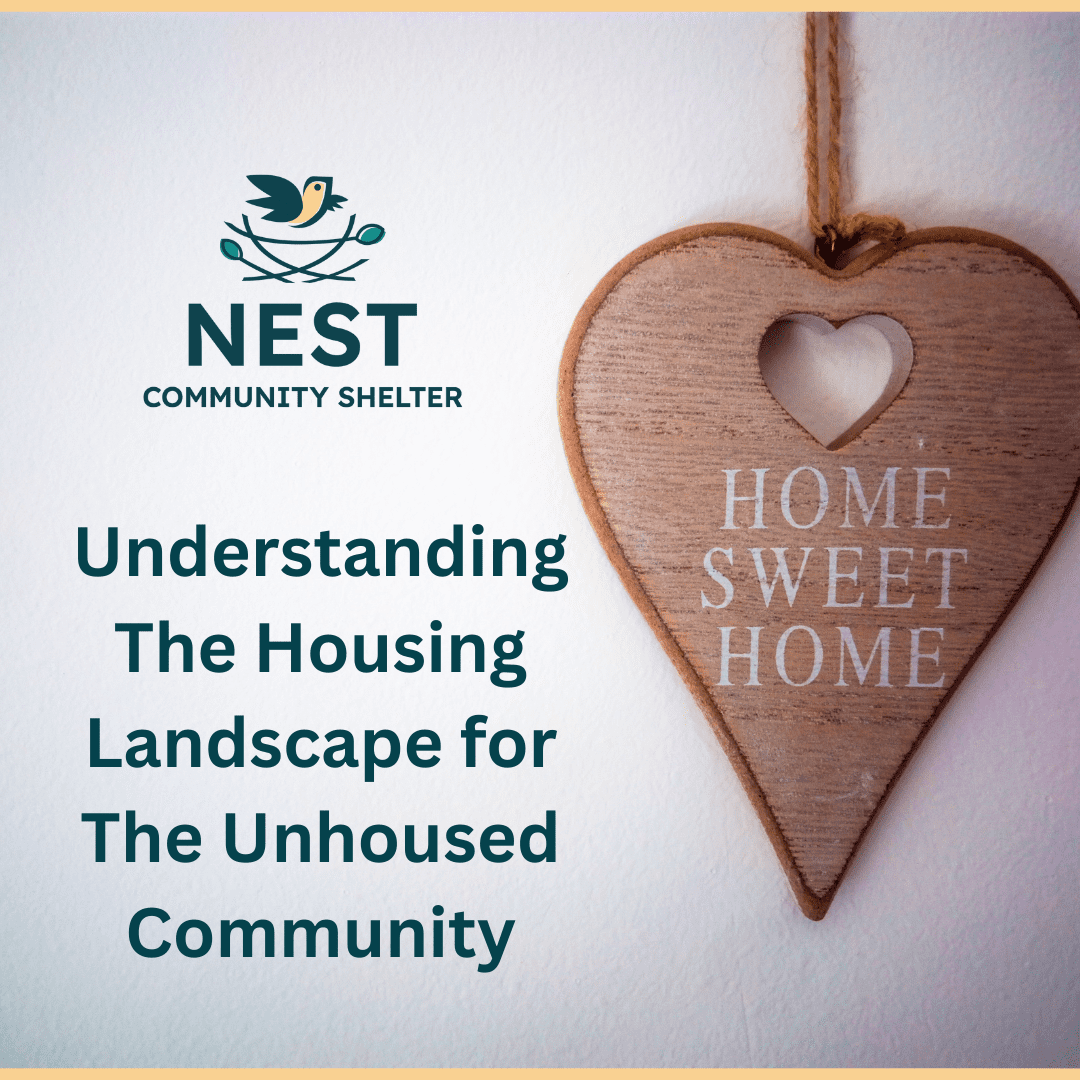
Earlier this week, Nest Community Shelter dedicated its radio show to education and advocacy surrounding the McKinney-Vento Act in our community. Listeners from the community were stunned to hear some sobering numbers, that over 155 students currently enrolled in Michigan City Area Schools are classified as McKinney-Vento students. Each of these students represents a family that, by definition, is experiencing homelessness, housing insecurity, or hidden homelessness.
Harrison Holtkamp, Nest Executive Director, shared an alarming statistic on-air: “Families with children represent one of the fastest-growing segments of the homeless population.” In 2024, families with children saw the steepest increase in homelessness compared to any other population category, with a staggering 39% rise from the previous year. On a single January night, 150,000 children were experiencing homelessness across America.
Despite these alarming numbers, persistent misconceptions about families experiencing homelessness create barriers to understanding and productive solutions. These myths not only shape public opinion but also influence the way people perceive this issue. These myths influence policies that impact vulnerable children and their parents, and the support services to help them.
Today, we want to address some of the most common misconceptions we hear about families experiencing homelessness:
Misconception #1: “Homeless families are mostly single mothers who should’ve planned better.”
While single-parent families have higher risks of homelessness, the causes can be complex. Research consistently shows that families become homeless due mainly to financial and interpersonal factors.
Domestic violence is the third leading cause of homelessness among families, according to the Arizona Coalition to End Sexual and Domestic Violence. An even more startling statistic: 92% of homeless women have experienced physical or sexual violence. Many families experiencing homelessness are fleeing dangerous situations. If the escape must be swift without much warning, this often leaves the fleeing family with little to no resources.
For some mothers, there isn’t a choice; staying in a domestic violence situation means it becomes a life-or-death situation for themselves and for their children. This is the illusion of choice, because no mother wants to see their children harmed directly or indirectly.
Misconception #2: “Parents with children can always find help and housing quickly.”
While families with children do commonly receive priority in many housing programs, the demand far exceeds available resources. According to Security.org, families experiencing homelessness make up 91 percent of the 57,563 homeless families that receive temporary shelters. However, keep in mind that this statistic only reports families that have reached out for support services. Many hide their living situation for fear of the loss of their parental rights, the stigma of homelessness, and other factors.
One factor that can prevent a family from seeking services is that shelter life can present its own challenges for families.
Many family shelters have strict rules that can be difficult for children to navigate. Parents often have to separate from their children during the day, disrupting family bonds during an already traumatic time. Our executive director addressed this issue head-on earlier this week on air, stating that Nest Community Shelter is not ideally suited for families. He remarked that almost no child wants to wake up at 5 am and be out the door by 7:30 am, then return in the evening to wait for the doors to open for the night at 5 pm. This is rough for children. However, Nest Community Shelter collaborates with partners to find families more suitable shelter accommodations that cater to the nuances of supporting families experiencing homelessness.
It is common to hear of transitional housing and permanent supportive housing programs designed explicitly for families, which have lengthy waiting lists for entry. Families often cycle between temporary solutions while waiting for stable housing.
Misconception #3: “If parents just worked harder, their families wouldn’t experience homelessness.”
This is perhaps the most damaging myth about homeless families. According to the United States Interagency Council on Homelessness, “As Many as 40%-60% of people experiencing homelessness have a job, but housing is unaffordable because wages have not kept up with rising rents.” Many homeless parents work multiple jobs but still cannot afford housing in their communities.
The math is unforgiving: there is no county or state where a full-time minimum-wage worker can afford a modest apartment. A family needs to earn an average of $46,967 annually, or $23 per hour, to afford a 2-bedroom apartment at Fair Market Rent. For context, the federal minimum wage is $7.25 per hour.
Working while experiencing homelessness presents unique challenges for families:
- Childcare barriers: Parents may lose jobs because they cannot find or afford childcare while working.
- School disruption: Children frequently change schools, which can impact their education and their parents’ ability to maintain consistent work schedules. This is where the McKinney-Vento Act is particularly useful; it was created to provide educational stability to students experiencing homelessness.
- Lack of permanent address: Many employers require a stable address, creating a catch-22 situation. Nest Board President Kristy Hahn addressed this topic on the radio show about the McKinney-Vento Act, stating that a lack of address is a significant stumbling block for children experiencing homelessness and hidden homelessness.
- The Stigma: For parents, school can be a safe form of childcare, but this is only if they’re able to enroll their student. This may involve reporting that they are experiencing homelessness to access the McKinney-Vento services. However, this also opens up the stigma of experiencing homelessness for the entire family, something that most want to avoid if possible.
- Transportation issues: Families may lack reliable transportation to get to work consistently. Relying on public transportation comes with challenges, including limited hours of operation, high costs, and limited route availability.
Misconception #4: “Homeless families are long-term cases who don’t want to change.”
Most families that are experiencing homelessness for the first time actively seek to exit the situation quickly. Most parents want a safe and healthy environment for their children to grow up in. For those experiencing homelessness, hidden homelessness, or housing instability, most will work as quickly and as diligently as possible to provide a warm, comfortable home for their children.
Misconception #5: “Children in homeless families are primarily teenagers who’ve run away.”
According to the National Alliance to End Homelessness, “the majority of children experiencing homelessness are under 12 years old. There are around 17,600 children under 12 who are homeless on any given night, and this number has increased by 11% over the last five years.”
These children are not runaways—they are with their families, who have lost stable housing.
The impact on young children is particularly devastating:
- Health challenges: Homeless children have higher rates of illness and developmental delays.
- Emotional trauma: The instability affects children’s mental health and social development.
- Hidden homelessness: Many families experience “doubled-up” living situations, staying with friends or relatives in overcrowded conditions.
Misconception #7: “Homeless families refuse help because they prefer the lifestyle.”
When families experiencing homelessness decline certain services, there are usually practical reasons (again, the illusion of choice):
- Family separation: Many shelters don’t accommodate families together, forcing parents to choose between shelter and staying with their children.
- Pet policies: Families with pets, often their children’s emotional support, may be turned away from shelters.
- Safety concerns: Parents may avoid shelters they perceive as unsafe for their children.
- Work schedule conflicts: Shelter curfews may conflict with parents’ work schedules.
- School continuity: Families may decline shelter placement that would force children to change schools.
- The stigma of experiencing homelessness: Parents may choose to keep their housing situation secret due to the social stigma, especially if they are part of a community and intend to stay in that community.
The Real Face of Families Experiencing Homelessness:
Understanding who homeless families are helps dispel these harmful myths and bring about solutions as a community:
- Working families: Many have at least one working parent, but cannot afford housing on their wages.
- First-time homeless: Most are experiencing homelessness for the first time due to a crisis.
- Local residents: They are members of our communities who have fallen on hard times.
- Motivated to change: Families actively work to exit homelessness, often succeeding when given appropriate support.
- Victims of circumstances: Economic factors, domestic violence, and affordable housing shortages are the primary drivers.
The Impact of These Misconceptions
These myths about homeless families have real consequences:
- Policy decisions: Misconceptions influence funding priorities and program designs.
- Community support: Misbeliefs reduce sympathy and support for practical solutions.
- Self-blame: Families internalize these myths, leading to shame and reluctance to seek help.
- Systemic barriers: Discrimination based on misconceptions creates additional obstacles for families looking to leave this situation, such as difficulties obtaining housing, employment, and support.
Moving Toward Solutions
The evidence points to clear, practical solutions for family homelessness:
- Affordable housing development: Creating more affordable housing that families can afford in our community.
- Wraparound services: Providing childcare, transportation, and other key support pieces that help families maintain housing and employment.
- Prevention programs: Identifying and assisting at-risk families before they become homeless.
What We Can Do as a Community:
As community members, we can support homeless families by:
- Challenging misconceptions when we hear them in our communities.
- Supporting family-focused programs that address the unique needs of children and parents. Seek out volunteer opportunities at these programs or consider donating to these causes.
- Advocating for affordable housing and living wage policies in our community
- Volunteering with organizations that specifically serve homeless families.
- Understanding the complexity of family homelessness rather than accepting simplistic explanations
Homeless families are not a distant problem; they are children and parents in our community. Over 155 students in Michigan City alone, about six classrooms full. Keep in mind that this is also just the number of families that have reached out for support; the actual number may be much higher in the community. Families experiencing homelessness currently face a difficult and competitive housing market and economic challenges. These families are working, motivated, local residents who need our support.
There are 150,000 children experiencing homelessness on any given night across the United States, representing a crisis that demands our immediate attention and evidence-based solutions. We know that generational homelessness is a real thing and that when children experience homelessness, they are more likely to experience it again as adults. By understanding the reality of family homelessness rather than relying on harmful misconceptions, we can work together to ensure that every child has a safe, stable place to call home.
The next time you hear someone perpetuate myths about homeless families, remember the facts: these are families just like any other, facing circumstances that could happen to anyone. They deserve our compassion and support.



